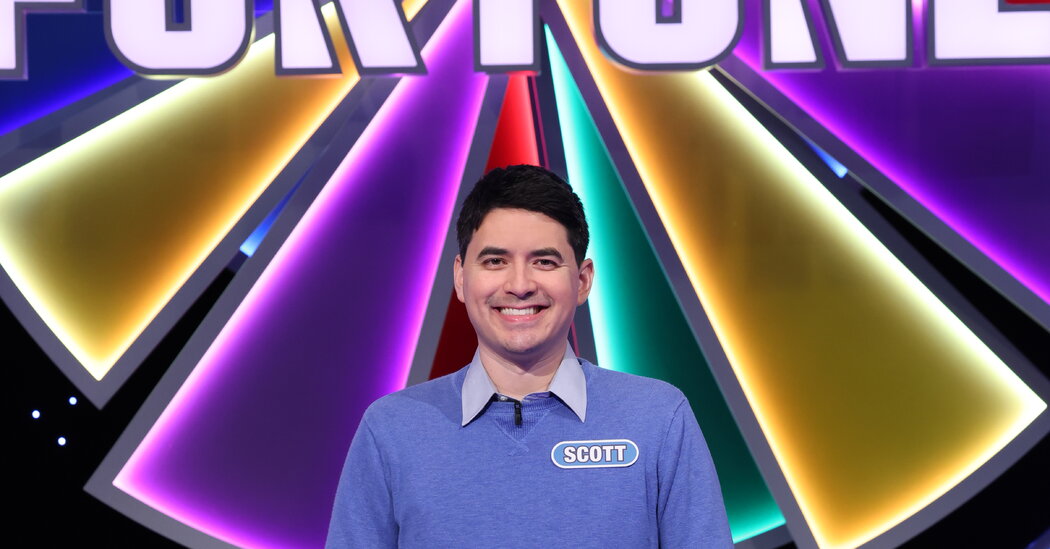
Last December, the Upshot published a guide to Wheel of Fortune strategies, using data from more than 6,000 bonus-round puzzles. Our guide has influenced the behavior of at least one contestant. Scott Menke, a data analyst from New Jersey, won $52,690 in cash and prizes on an episode last month after creating a strategy based on our article, he said.
Some of Mr. Menke’s preparation, and his calmness under pressure, is not easily replicable. It came from experience: He had been a semifinalist on the “Jeopardy!” college championship, won $20,000 on “Who Wants to Be a Millionaire,” and banked $50,000 on “The $100,000 Pyramid.”
When competing on “Wheel,” he said, he hardly had any nerves.
But much of his preparation is a practical case study for future contestants. He went beyond our guide and came up with a good set of tips for blank words.
Here’s Mr. Menke’s final bonus-round puzzle (with the letters R, S, T, L, N and E already given and B, G, H and O selected). Feel free to pause and consider possible solutions. Then read on to see how he prepared for the moment.
Once Mr. Menke learned he was going to be on “Wheel of Fortune” in February, he had just 20 days before taping. To study for the main game, when he would be up against two other contestants, he downloaded old puzzles from the fan-created Wheel of Fortune Puzzle Compendium. But given the unpredictability of the main game, he decided that “95 percent” of his prep would be on the bonus round. He found our article on bonus-round strategy and began training.
Scott Menke’s ‘Wheel’ Training Regimen
-
First, he decided that if he made it to the bonus round, he would pick the “Phrase” category, which we recommended in our guide, and BGHO as his extra letters, which we recommended as tied for the best combination. (The player is automatically given RSTLNE first.)
-
Since he knew he was definitely picking BGHO, he practiced old bonus-round puzzles with both the default RSTLNE and his BGHO filled in.
-
Mr. Menke says the best thing to study is words that are all blank. Although blank words are intimidating at first, the number of words that can be blank after the letters RSTLNE and BGHO are filled in is smaller than you’d think. For instance, of the 24 most common two-letter words, only four do not have any of those letters. Using the data from past bonus-round puzzles, he determined that such a blank two-letter word would most likely be MY or UP.
-
He then did this for all blank word combinations from two to seven letters. The study sheet he created is below.
When the letters were revealed for the final bonus round, he immediately knew the final three words (AT THE OPPORTUNITY) but didn’t know the first blank word. He started “cycling through the list” of blank words out loud, saying PICK and PACK first. When he finally got the correct answer, JUMP, he didn’t realize it at first.
Mr. Menke said he knew his preparation was working when, while practicing at home on old bonus-round puzzles, he was able to solve an almost completely blank puzzle immediately. Although the puzzle below looks unsolvable at first glance, if you use his study guide, it may actually be easier than most clues that have many letters filled.